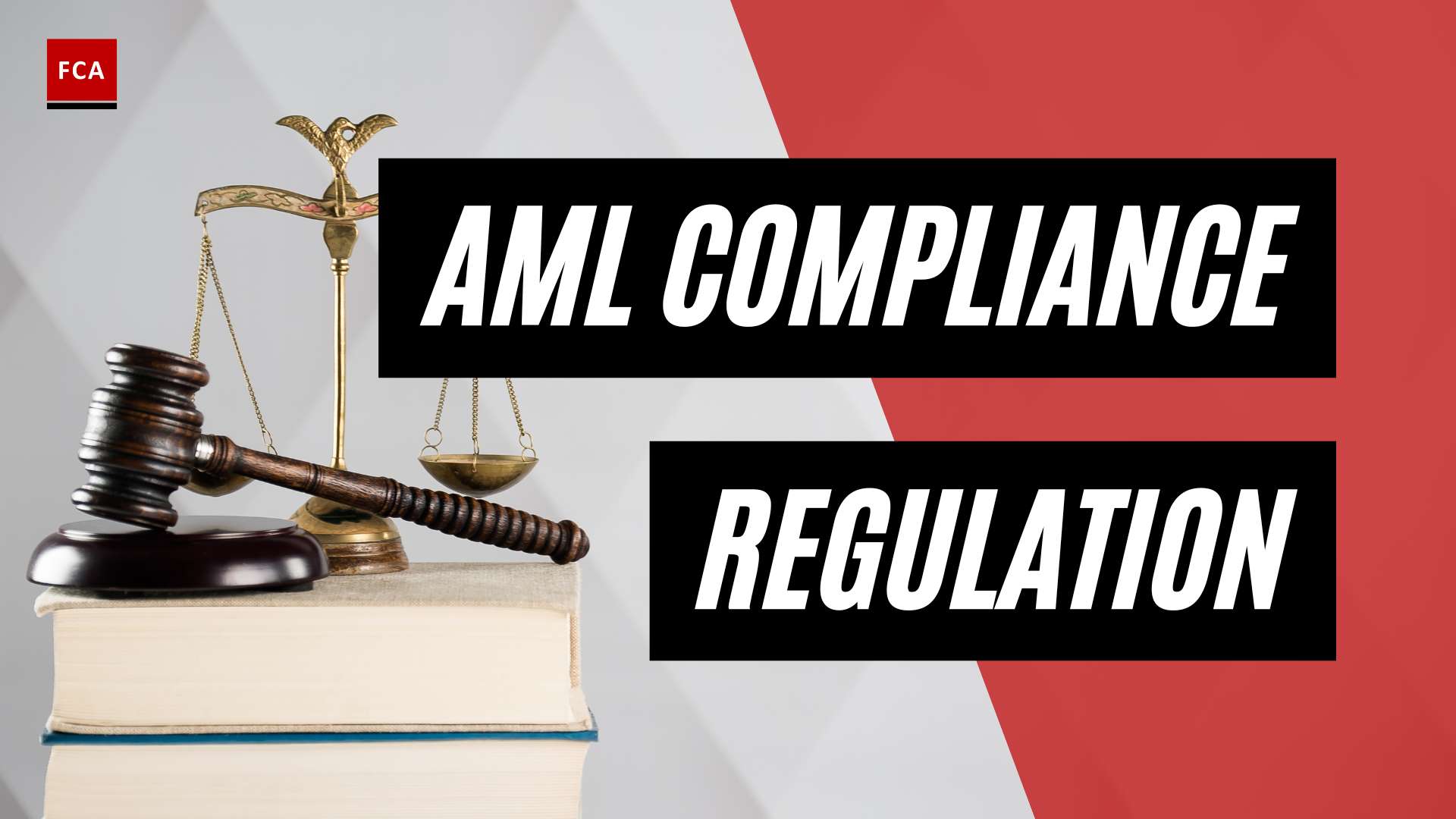AML Regulations: An Overview
Anti-Money Laundering (AML) regulations play a crucial role in combating financial crimes and ensuring the integrity of the global financial system. These regulations require businesses, particularly those in the financial sector, to implement robust compliance programs and maintain meticulous recordkeeping practices. By doing so, they contribute to the prevention and detection of money laundering, terrorist financing, and other illicit activities.
Introduction to AML Regulations
AML regulations demand that businesses maintain detailed records of customer identities, transactions, and due diligence efforts, including Know Your Customer (KYC) protocols, in order to tackle financial crimes effectively (Trulioo). These regulations aim to protect businesses, their customers, and the overall economy from the risks associated with money laundering and illicit financial activities.
Implementing AML programs and recordkeeping mechanisms is required by law, with the USA PATRIOT Act being one of the most important pieces of legislation enforcing these regulations (Trulioo). The Act, enacted in response to the September 11 attacks, strengthened AML measures and expanded the obligations of financial institutions to combat financing of terrorism and money laundering.
Importance of AML Regulations for Businesses
The importance of AML regulations and recordkeeping in businesses was highlighted by the 2001 USA PATRIOT Act, which aimed to combat financing of terrorism and money laundering. The Act requires financial institutions to create comprehensive AML programs that include policies, procedures, and controls for recordkeeping and reporting activities (Tookitaki).
Non-compliance with AML regulations can lead to severe consequences for businesses, including hefty fines, reputational damage, and even criminal charges for responsible individuals. Therefore, it is imperative for businesses to understand and adhere to these regulations to protect themselves and maintain the trust of their customers and stakeholders.
By implementing effective AML compliance programs and maintaining accurate and up-to-date records, businesses can contribute to the fight against financial crimes and demonstrate their commitment to ethical and responsible business practices. In the following sections, we will explore the key components of AML compliance, the specific recordkeeping requirements, the consequences of non-compliance, the role of technology in AML compliance, and best practices for effective recordkeeping.
Key Components of AML Compliance
To ensure compliance with Anti-Money Laundering (AML) regulations, businesses must implement various key components within their AML compliance programs. These components include customer due diligence (CDD), risk assessments, monitoring transactions, and reporting suspicious activities.
Customer Due Diligence (CDD)
Customer Due Diligence is a crucial aspect of AML compliance. It involves the process of verifying the identity of customers and assessing the risks associated with their activities. By conducting thorough due diligence, businesses are better equipped to identify and mitigate potential money laundering or terrorist financing risks.
The CDD process typically includes collecting and verifying customer identification information, such as name, address, date of birth, and identification documents. This information helps businesses establish the identity of their customers and assess the level of risk they pose. For more information on AML regulations and customer due diligence, refer to our article on aml regulations and customer due diligence.
Risk Assessments
Risk assessments are an essential component of AML compliance. They involve identifying and evaluating the money laundering and terrorist financing risks faced by a business. By conducting risk assessments, businesses can develop risk-based policies and procedures tailored to their specific needs.
During a risk assessment, businesses analyze various factors, such as customer types, geographical locations, products or services offered, and delivery channels. This analysis helps determine the level of risk associated with different aspects of the business and enables the implementation of appropriate controls to mitigate those risks. To learn more about AML regulations and risk assessment for businesses, refer to our article on aml regulations and risk assessment for businesses.
Monitoring Transactions
Monitoring transactions is a critical component of AML compliance. It involves the ongoing surveillance of customer transactions to detect and report any suspicious activities that may indicate potential money laundering or terrorist financing.
Businesses should establish robust monitoring systems that analyze transactional data in real-time or periodically. These systems utilize advanced technologies, such as artificial intelligence (AI) and machine learning, to identify patterns, anomalies, or red flags that may indicate suspicious activities. By monitoring transactions effectively, businesses can promptly report suspicious activities and fulfill their obligations under AML regulations.
Reporting Suspicious Activities
Reporting suspicious activities is a key obligation under AML regulations. Businesses must have mechanisms in place to identify and report any transactions or activities that raise suspicions of money laundering or terrorist financing.
When businesses detect suspicious activities, they should file suspicious activity reports (SARs) or similar reports to the appropriate regulatory authorities. These reports provide detailed information about the suspicious transactions or activities and assist law enforcement agencies in their efforts to combat financial crimes. For more information on AML regulations and reporting requirements for businesses, refer to our article on aml regulations and reporting requirements for businesses.
By incorporating these key components into their AML compliance programs, businesses can effectively mitigate the risks of money laundering and terrorist financing. It is essential for businesses to stay up-to-date with the evolving AML regulations and ensure that their compliance efforts align with the latest requirements.
Recordkeeping Requirements for AML Compliance
To ensure effective anti-money laundering (AML) compliance, businesses are required to maintain comprehensive records relating to their AML efforts. These records play a crucial role in combating financial crimes and meeting regulatory obligations. Key recordkeeping requirements include documenting customer identification records, transaction records, and risk assessment records.
Overview of Recordkeeping in AML
AML regulations demand that businesses maintain detailed records to tackle financial crimes effectively. These records serve as an essential source of information for regulatory authorities during audits and investigations. By documenting various aspects of their AML processes, businesses can demonstrate their commitment to compliance and provide evidence of due diligence (Trulioo).
Customer Identification Records
As part of AML compliance, businesses are required to collect and retain customer identification records. These records typically include information such as the customer’s name, date of birth, address, identification number, and supporting documentation. Organizations must verify the accuracy and authenticity of this information to ensure compliance with AML regulations. Keeping these records allows businesses to perform ongoing customer due diligence (CDD) and identity verification (Finscan).
Transaction Records
Another crucial aspect of AML recordkeeping is maintaining transaction records. Businesses must retain comprehensive records of financial transactions conducted by their customers. These records should include details such as the transaction date, amount, nature of the transaction, and the parties involved. Businesses must also keep records of specific transaction types, such as large cash transactions, electronic fund transfers, and virtual currency transactions (Source).
| Transaction Type | Recordkeeping Details |
|---|---|
| Large Cash Transactions | Transactions of $10,000 or more in cash |
| Electronic Fund Transfers | Transactions of $1,000 or more |
| Large Virtual Currency Transactions | Transactions equivalent to $10,000 or more in virtual currency |
Figures courtesy Source
Keeping these transaction records not only helps businesses monitor and identify potentially suspicious activities but also assists in fulfilling their reporting requirements to regulatory authorities.
Risk Assessment Records
In order to effectively manage the risks associated with money laundering and terrorist financing, businesses must conduct risk assessments. These assessments involve evaluating the potential risks posed by customers, products, services, and geographic locations. Recordkeeping of these risk assessments is essential to demonstrate a business’s understanding of its risk exposure and the measures taken to mitigate those risks (Trulioo).
Maintaining records of risk assessments allows businesses to demonstrate their compliance with AML regulations and provides a basis for ongoing monitoring and improvement of their AML programs.
By adhering to recordkeeping requirements, businesses can demonstrate their commitment to AML compliance and mitigate the risk of non-compliance. Accurate and well-organized recordkeeping ensures transparency, aids in audits and investigations, and helps businesses fulfill their obligations under AML regulations.
Consequences of Non-Compliance
Ensuring compliance with Anti-Money Laundering (AML) regulations is of paramount importance for businesses. Failure to comply with these regulations can result in severe consequences, including penalties, reputational damage, and legal repercussions. In this section, we will explore the potential consequences of non-compliance with AML regulations.
Penalties for Non-Compliance
Non-compliance with AML regulations can lead to significant financial penalties. Regulatory bodies have the authority to impose fines on businesses that fail to meet their AML obligations. The exact penalties vary depending on the jurisdiction and the severity of the violation. For example, in Canada, violations related to record-keeping requirements under the Proceeds of Crime (Money Laundering) and Terrorist Financing Act can range from failure to keep prescribed records to failure to provide a record to an authorized person within 30 days of their request. These violations have different levels of harm, each incurring a different maximum penalty amount, ranging from $250 to $1,000 (FINTRAC).
It’s important to note that penalties may be reduced if there are mitigating factors or if the business took steps to rectify the non-compliance. However, repeat violations or deliberate non-compliance can result in higher penalties and increased scrutiny from regulatory authorities.
Reputational Damage and Legal Consequences
Non-compliance with AML regulations can have severe reputational consequences for businesses. News of non-compliance can spread quickly, damaging the trust and credibility that businesses have built with their customers, partners, and stakeholders. The negative publicity resulting from non-compliance can lead to a loss of customers, business opportunities, and partnerships.
In addition to reputational damage, non-compliance with AML regulations can also lead to legal consequences. Regulatory bodies have the authority to initiate legal action against businesses and individuals who fail to comply with AML requirements. Criminal charges may be filed against responsible individuals, potentially resulting in fines, imprisonment, or both. It is essential for businesses to understand and adhere to their AML obligations to avoid these legal ramifications.
To mitigate the risk of non-compliance, businesses should prioritize AML compliance by implementing robust internal controls, conducting regular risk assessments, and ensuring comprehensive recordkeeping. By proactively addressing AML compliance, businesses can minimize the potential consequences and demonstrate their commitment to combating money laundering and terrorist financing.
In the next section, we will explore the role of technology in AML compliance, including the use of AI and machine learning, as well as AML software solutions.
Role of Technology in AML Compliance
As businesses strive to meet their AML regulation compliance obligations, technology plays a crucial role in simplifying and enhancing their efforts. Two key technological advancements in this field are the use of artificial intelligence (AI) and machine learning and the availability of AML software solutions.
The Use of AI and Machine Learning
Emerging technologies, such as AI and machine learning, are being increasingly utilized by businesses to strengthen their AML compliance strategies. These technologies offer powerful tools for identifying and analyzing patterns of suspicious activities, allowing businesses to more efficiently detect and prevent money laundering and other financial crimes. AI and machine learning algorithms are capable of processing large volumes of data, spotting anomalies, and generating alerts for further investigation. This aids in the identification of potential risks and the maintenance of robust compliance measures.
By leveraging AI and machine learning, businesses can improve the accuracy and effectiveness of their AML efforts. These technologies enable continuous monitoring of customer behavior, transactional patterns, and other relevant data, enabling businesses to identify potential red flags and take appropriate action. Additionally, AI and machine learning algorithms can adapt and learn from new data, enhancing their ability to detect evolving money laundering techniques and patterns.
AML Software Solutions
To streamline AML compliance processes and facilitate effective recordkeeping, businesses can leverage AML software solutions. These solutions provide comprehensive tools and functionalities to support various aspects of AML compliance, including customer due diligence (CDD), risk assessments, transaction monitoring, and reporting.
Leading AML software solutions offer features such as risk profiling, identity verification, watchlist screening, and transaction monitoring. They enable businesses to automate compliance procedures, reducing manual effort and ensuring consistent adherence to AML regulations. These software solutions also help organizations maintain accurate and up-to-date records, as required by regulatory bodies.
Some notable AML software providers include ComplyAdvantage, LexisNexis Risk Solutions, Dow Jones Risk and Compliance, LSEG Data and Analytics (formerly Refinitiv), Oracle, and others (ComplyAdvantage). These software solutions offer a range of functionalities designed to meet the specific needs of businesses in various industries, including banking, finance, and other regulated sectors.
By utilizing advanced AML software solutions, businesses can streamline their compliance processes, reduce the risk of non-compliance, and enhance their recordkeeping capabilities. These solutions enable businesses to efficiently manage customer data, conduct risk assessments, and generate reports, ensuring transparency and accountability in their AML compliance efforts.
In summary, the role of technology in AML compliance is invaluable. AI and machine learning enable businesses to detect and prevent money laundering activities more effectively, while AML software solutions provide the necessary tools to streamline compliance processes and maintain accurate records. By embracing these technological advancements, businesses can enhance their AML compliance frameworks and contribute to a safer and more secure financial ecosystem.
AML Regulations in Specific Jurisdictions
Anti-Money Laundering (AML) regulations play a crucial role in combating financial crimes and protecting the integrity of the financial system. These regulations differ from one jurisdiction to another, tailored to the specific needs and priorities of each country. In this section, we will explore AML regulations in the United States and Canada.
AML Regulations in the United States
In the United States, AML regulations are enforced under the Bank Secrecy Act (BSA) and its implementing regulations. The BSA outlines the requirements for recordkeeping and AML compliance to combat money laundering and other financial crimes. Financial institutions are obligated to adhere to these regulations, creating comprehensive AML programs that include policies, procedures, and controls for recordkeeping and reporting activities.
Under the BSA, businesses are required to maintain records of currency transactions over $10,000, suspicious activity reports, and customer identification information. These records are vital for monitoring and detecting potential money laundering activities. The Financial Crimes Enforcement Network (FinCEN) is the regulatory body responsible for overseeing AML compliance in the United States, providing guidelines and enforcing compliance standards.
Financial institutions in the United States must also establish and implement written AML compliance programs that include policies, procedures, a designated AML compliance officer, ongoing training, and independent testing. These programs ensure that businesses have robust systems in place to prevent money laundering and comply with AML regulations (FINRA AML FAQ).
AML Regulations in Canada
In Canada, AML regulations are primarily governed by the Proceeds of Crime (Money Laundering) and Terrorist Financing Act (PCMLTFA) and its associated regulations. The legislation places obligations on various entities, including financial institutions, money services businesses, casinos, and dealers of precious metals and stones, to implement effective AML programs.
Under the PCMLTFA, businesses are required to perform customer due diligence, report large cash transactions, suspicious transactions, and terrorist property, and maintain records of these activities. Financial Transactions and Reports Analysis Centre of Canada (FINTRAC) is the regulatory body responsible for overseeing compliance with AML regulations in Canada, ensuring that businesses adhere to their obligations and maintain accurate records (Tookitaki).
It’s important for businesses operating in both the United States and Canada to be aware of the specific AML regulations applicable to their jurisdiction. By understanding and complying with these regulations, businesses can contribute to the prevention of money laundering, terrorist financing, and other illicit financial activities, fostering a safer and more secure financial environment.
Best Practices for AML Recordkeeping
Maintaining accurate and comprehensive records is crucial for businesses to comply with Anti-Money Laundering (AML) regulations. Effective recordkeeping practices not only help businesses monitor accounts and detect suspicious activities but also ensure compliance with AML regulations. In this section, we will explore the importance of accurate recordkeeping, how to build a robust recordkeeping system, and the lessons learned from past AML scandals.
Importance of Accurate Recordkeeping
Accurate recordkeeping is a fundamental aspect of AML compliance. Businesses are required to maintain customer identification records for a minimum of five years after the account is closed, ensuring availability for compliance checks and audits (Tookitaki). These records include information such as customer identification, transaction activities, and risk assessments.
By documenting and retaining these records, businesses can demonstrate their commitment to combating money laundering and terrorist financing. Regular monitoring of customer transactions and timely reporting of suspicious activities are essential in this regard. Accurate recordkeeping enables businesses to effectively analyze customer behavior, detect patterns, and identify potential risks (Tookitaki).
The Panama Papers leak in 2016 highlighted the importance of record-keeping in AML compliance. The leak emphasized the need for businesses to maintain accurate records and demonstrate transparency in their operations. A robust recordkeeping system not only helps businesses meet regulatory requirements but also safeguards their reputation and integrity.
Building a Robust Recordkeeping System
To establish a robust recordkeeping system, businesses should consider the following practices:
-
Clear Policies and Procedures: Develop clear policies and procedures that outline recordkeeping requirements and responsibilities. These guidelines should ensure compliance with AML regulations and provide step-by-step instructions for capturing and storing relevant information.
-
Thorough Customer Due Diligence: Conduct thorough customer due diligence and maintain detailed records of customer identification. This includes collecting and verifying important documents such as identification cards, proof of address, and beneficial ownership information.
-
Transaction Records: Keep comprehensive records of customer transactions, including transaction amounts, dates, parties involved, and the purpose of the transactions. This information is crucial for monitoring and detecting suspicious activities.
-
Risk Assessment Records: Maintain records of risk assessments conducted for each customer. These assessments should consider factors such as the customer’s source of funds, business relationships, and geographic risk. Regularly review and update risk assessment records to reflect any changes in a customer’s risk profile.
-
Secure Storage: Ensure that all records are securely stored to prevent unauthorized access or loss. Implement appropriate security measures such as encryption, access controls, and regular data backups.
By implementing these best practices, businesses can establish a robust recordkeeping system that allows for efficient compliance with AML regulations.
Lessons from Past AML Scandals
Past AML scandals have highlighted the importance of accurate recordkeeping and the need for businesses to maintain transparency in their operations. Lessons learned from these scandals include:
-
Proactive Monitoring: Regularly monitor customer transactions and conduct ongoing due diligence. Implement systems and technologies that can identify unusual patterns or suspicious activities.
-
Training and Awareness: Provide comprehensive training to employees on AML regulations, recordkeeping requirements, and the importance of compliance. Foster a culture of awareness and vigilance within the organization.
-
Automation and Technology: Leverage automation and technology solutions to streamline recordkeeping processes and enhance accuracy. AML software solutions can aid businesses in identifying potential risks, conducting risk assessments, and maintaining records effectively.
By learning from past AML scandals and implementing these lessons, businesses can strengthen their recordkeeping practices and ensure compliance with AML regulations.
Accurate recordkeeping is not only a regulatory requirement but also an essential component of a robust AML compliance program. By recognizing the importance of accurate recordkeeping, building a robust recordkeeping system, and learning from past AML scandals, businesses can effectively combat money laundering and safeguard their operations.









